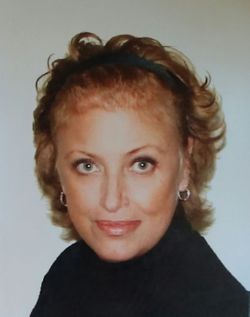Bio
Researching the DRAKE/EASTMAN/SMITH line on my mother's side; and the EARP/TRENT line on my father's side. My family are the Cook's and Baker's, they were butchers. Yup, Market St in Little Cambridge.
Abt South Burying Ground, Boston: The tombs at Central Burying Ground were having issues, so the mayor of Boston stated in 1827 that he was going to shut down the tombs, but provide a burial elsewhere. They found a cemetery that was being used by the locals at "South West Square". The City stated this was not an approved cemetery, and made it so. The stones that were there were recorded for vitals, but the thought was that there were more burials than they knew about. Four large tombs were made and finished in 1828, and the people were offered "an affordable burial", but they were mass burials. They were going to make tomb 1 for children. This cemetery was not officially named, it was just referred to as the burying ground for the South District. The carriers referred to it as South West Square (SWSq), and this is reflected in the burial recs over and over again. Aft 1828, the carriers were referring to Granary as South Burying Ground for a time, and went back to Middle District after this time. The first public ground burial that the townsfolk were up in arms about was at Granary; the City declared 1810 it open for public burials, but the first public burial was Nov/Dec 1809, which started the outcry. There will not be headstones at South West Square cemetery for the mass burials between 1828 and abt 1840 when Central was reopened. I'm not sure if SWSq was open for ground burials after this situation; I did not research that far for this cemetery.
WikiSource is unsourced... FIND THE BOOK.
Researching the DRAKE/EASTMAN/SMITH line on my mother's side; and the EARP/TRENT line on my father's side. My family are the Cook's and Baker's, they were butchers. Yup, Market St in Little Cambridge.
Abt South Burying Ground, Boston: The tombs at Central Burying Ground were having issues, so the mayor of Boston stated in 1827 that he was going to shut down the tombs, but provide a burial elsewhere. They found a cemetery that was being used by the locals at "South West Square". The City stated this was not an approved cemetery, and made it so. The stones that were there were recorded for vitals, but the thought was that there were more burials than they knew about. Four large tombs were made and finished in 1828, and the people were offered "an affordable burial", but they were mass burials. They were going to make tomb 1 for children. This cemetery was not officially named, it was just referred to as the burying ground for the South District. The carriers referred to it as South West Square (SWSq), and this is reflected in the burial recs over and over again. Aft 1828, the carriers were referring to Granary as South Burying Ground for a time, and went back to Middle District after this time. The first public ground burial that the townsfolk were up in arms about was at Granary; the City declared 1810 it open for public burials, but the first public burial was Nov/Dec 1809, which started the outcry. There will not be headstones at South West Square cemetery for the mass burials between 1828 and abt 1840 when Central was reopened. I'm not sure if SWSq was open for ground burials after this situation; I did not research that far for this cemetery.
WikiSource is unsourced... FIND THE BOOK.
Contributions
- Memorials Added
- Memorials Managed
- 72 Memorials per Week
- Photos Added
- Photo Requests
- Volunteer Photos Taken
- Flowers Added
- 15 Fame Ratings
- Sponsorships
- Followers
- Photos Transcribed
Advertisement
































































